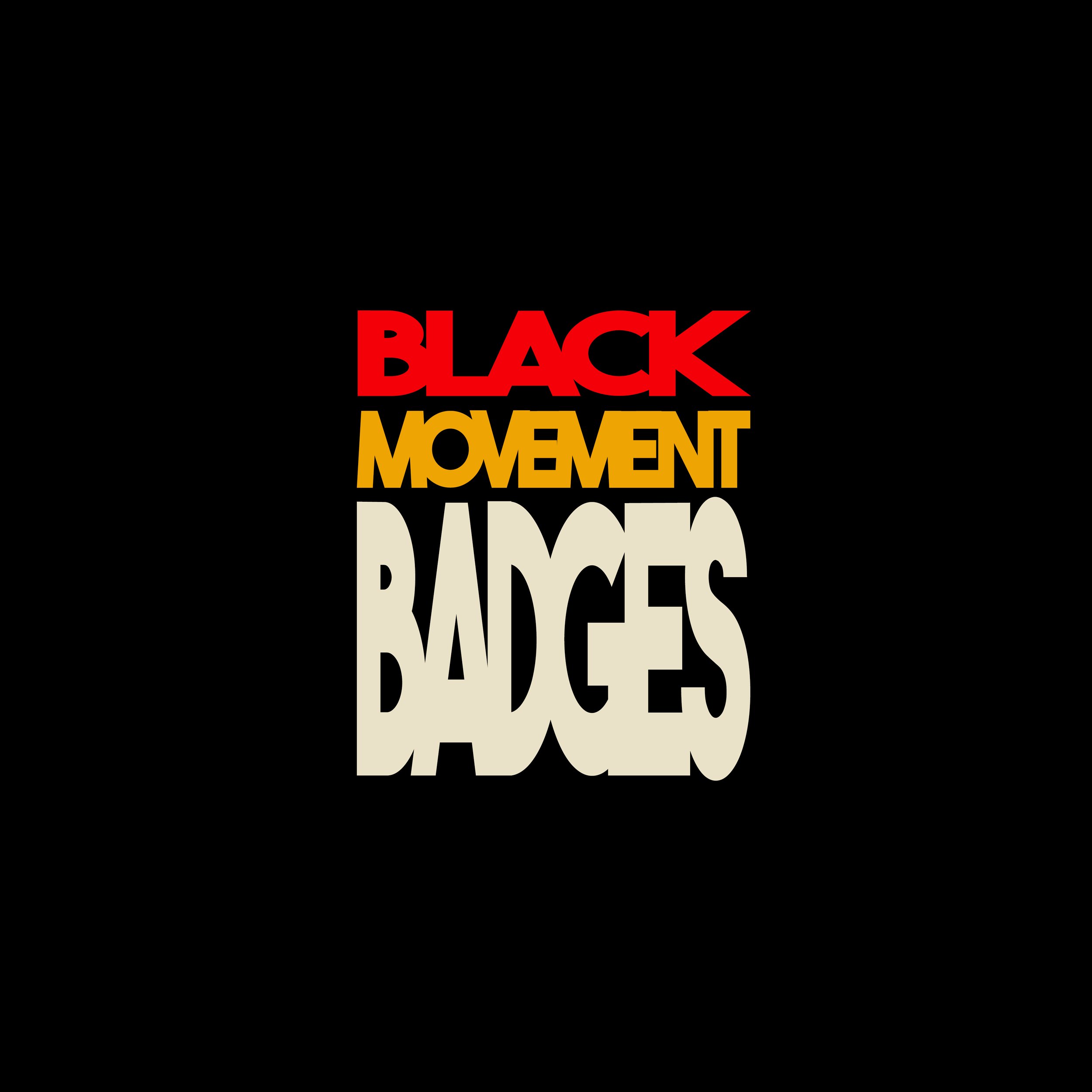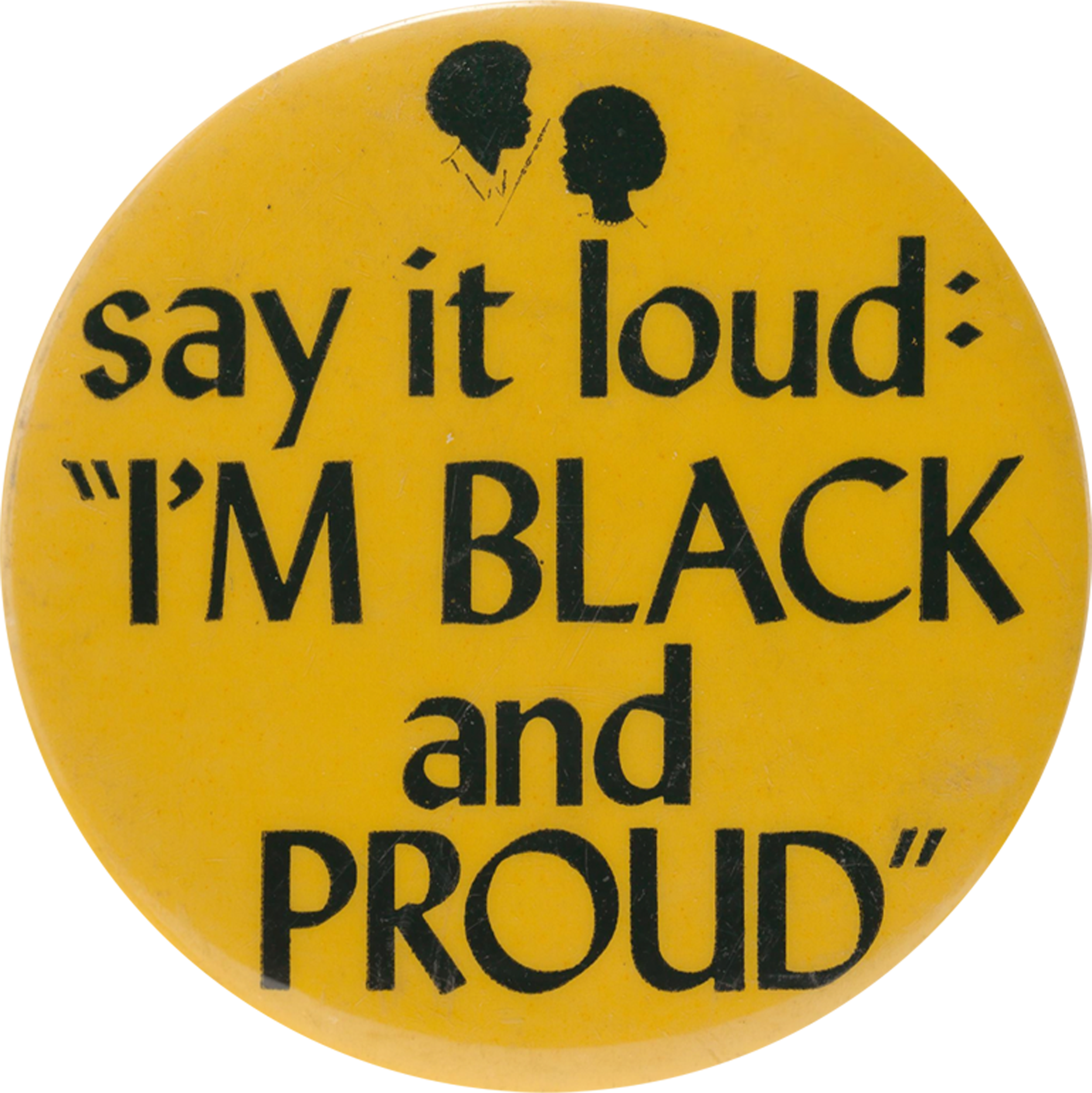An Exploration Into Black Movement Badges
Read through our Black Resources pages to discover more on Black history, stories and movements.
Pin badges have been an important symbol in black movements for the last 80 years. They are a powerful tool that can be used to showcase our pride in our heritage and culture, and to stand in solidarity with one another. Moreover, pin badges can act as a reminder of our shared history, the strength of our ancestors, and the awareness of our community. They have become a lasting symbol of unity and have the potential to pass down knowledge and stories through generations. It is no surprise that in the past eight decades, pin badges have been used to make a statement and help spread the message of any black movement. From small pins and patches to large banners, pin badges have been used to show pride and strength in the face of adversity. They are a powerful symbol of resistance and resilience and can continue to be a reminder of the importance of our collective history and identity.

Power, at Last… Forever!
“Round pin-back button featuring white and red type set against a black background. Type reads, [POWER,/AT LAST…/FOREVER!/FARRAKHAN]. A white horizontal line appears directly above the word "FARRAKHAN'.”
Farrakhan, Louis, American, born 1933
I’m Black and Proud
“A pinback button with a yellow background and black text that reads [say it loud: / "I'm Black and Proud"]. Above the text at the top of the button are two silhouettes. The back of the button has a metal pin without a clasp.”
Kwanzaa
“A pinback button for Kwanzaa. The button has a white background and a drawing in red, yellow, green, and black ink. At the center of the drawing is a circle filled with the depiction of two people looking at one another. Below them are a depiction of apples and bananas. Two infants are visible amongst the fruit. At the top of the center circle, there is a drawing of the Mishumaa Saba (seven candles). Within each candles white text reads [Kujichagulia / Ujima / Ujamaa / Umoja / Nia / Kuumba / Imani]. Additional symbols of Kwanzaa including the mazao (crops), Mahindi (corn), the Kikombe cha Umoja (unity cup), and the Kwanzaa dates [Dec. 26 /Jan. 1], are depicted on the sides of the center circle. At the bottom large green lettering reads [Kwanzaa]. The back of the button has a metal pin with a clasp.”
Black Roots The Soul Of The Earth
“A pinback button with a green background and a central red triangle. Within the triangle is a graphic of the globe in the upper half. The globe has the continents in green with all of South America and Africa featured. Extending out of the bottom of the globe are stylized roots in black. On the left side of the triangle is text [BLACK]. Additional text is on the right side [ROOTS]. Along the bottom of the triangle is a final line of black text [THE SOUL OF THE EARTH]. The back of the button has a pin without a clasp.”
Free All Political Prisoners
“A pinback button advocating prison reform. The button has a red background. To the left of the button there is an image of a panther behind jail bars. Text to the left reads [free all political prisoners]. The back of the button has a metal pin without a clasp.”
Everybody got a right to live
“Two white pinback buttons (2013.68.7.1-.2) with black lettering. On each button, the letters are centered in the top quarter. The black text reads [Everybody got a right to live]. Below the text is an image of a man with raised fists chained together by red handcuffs. The backs of the buttons have pins without clasps.”
Rev. Kirkpatrick, Frederick Douglass, American, 1933 - 1986. Deacons for Defense and Justice, American, founded 1964.
Free Huey
“A pinback button advocating to free Huey Newton. The background of the button is orange. At center black text reads [Free Huey]. The text is above and below a depiction of a black panther. The back of the button has a metal pin with a clasp.”
Dr. Newton, Huey P., American, 1942 - 1989
Black Power
“The white button has black text which reads [BLACK POWER] curved around the top. There is a black image of a clenched fist. The back is a darkened silver and has a wire pin.”
We are an African People
“The orange button has black text which reads [WE ARE AN AFRICAN PEOPLE] curved around the top and [SOBU] on the bottom proper right side. There is a green silhouette of Africa with a black outline. Inside of the silhouette there is an image of a clenched fist in black. The back is silver and has a wire pin.”
A pinback button for the Student Organization for Black Unity (SOBU).
Martin Luther King, Jr.
“Pinback button promoting April 4 as a national holiday honoring Dr. Martin Luther King, Jr.
The yellow button has black text which reads [NATIONAL HOLIDAY] curved around the top, [MARTIN / LUTHER / KING JR.] in the center, and [APRIL 4] curved at the bottom. The back is silver and has a wire pin.”
Pinback button for a national holiday for Martin Luther King, Jr.
Our Black Shining Prince
“Round pin-back button featuring a central black and white photograph of Malcolm X. White and black type surrounds center photograph and reads, [OUR BLACK SHINING PRINCE/MAY/19/1925/FEB/21/1965/"FREEDOM BY ANY MEANS NECESSARY"/MALCOLM X].”
X, Malcolm, American, 1925 - 1965
Angela is Free
“An orange button with a black and white image of Angela Davis. She is seen from the neck up and is looking directly at the camera. Around the image of Davis, Black text around the image reads “ANGELA IS FREE / FREE / ALL POLITICAL PRISONERS / T.U.A.D.” On the bottom outside edge is the manufacturer information in black text. “N.G. SLATER CORP, N.Y.C. 11.” There are two stickers on the back of the button. One is round with the number “1063.” The other sticker is rectangular with written text “Trade Union / for Action / & Democracy.””
Davis, Angela Y., American, born 1944
The Sixth Pan African Congress
“Round pin-back button featuring a yellow and black outline of Africa depicted with an anthropomorphous face. Green type set against a black border circles the outline. Green type reads, [PAN AFRICAN CONGRESS/SIXTH. Outermost border is yellow. Black type appears at bottom of button and reads, [DAR ES SALAAM].”
Pan-African Congress, 1919 - 1994
Nelson Mandela
“Round pin-back button featuring a black and white photograph of Nelson Mandela. Surrounding the photograph on three sides is yellow and green type. Yellow and green type reads, [NELSON / MANDELA / THE STRUGGLE IS MY LIFE].”
Mandela, Nelson, South African, 1918 - 2013
One Unified Socialist Africa
“Round pin-back button featuring black silhouette of Africa set against a white background. At the center of the Africa silhouette is white type that reads, [ONE/UNIFIED/SOCIALIST/AFRICA]. Black type circles the center image of Africa and reads, [ALL-AFRICAN PEOPLE'S/REVOLUTIONARY PARTY].”
All-African People's Revolutionary Party, founded 1958.
One Unified Socialist Africa
“Round pin-back button featuring a black outline of Africa set against a yellow background. Yellow type appears within the Africa outline and reads, [ONE/UNIFIED/SOCIALIST/AFRICA]. Black type appears against a red circular border and reads, [ALL AFRICAN PEOPLES/REVOLUTIONARY PARTY].”
All-African People's Revolutionary Party, founded 1958.
Malcolm X Speaks For Me
“Round pin-back button featuring black type set against a white background. Black type reads, [MALCOLM X/SPEAKS/FOR ME].”
X, Malcolm, American, 1925 - 1965
Teach the Children the Truth
“A green pin-back button belonging to Abiodun Oyewole. The button has a green background with black and pink type that reads: [TEACH / THE CHILDREN / THE TRUTH]. The back of the button has a single pin with a clasp.”




















